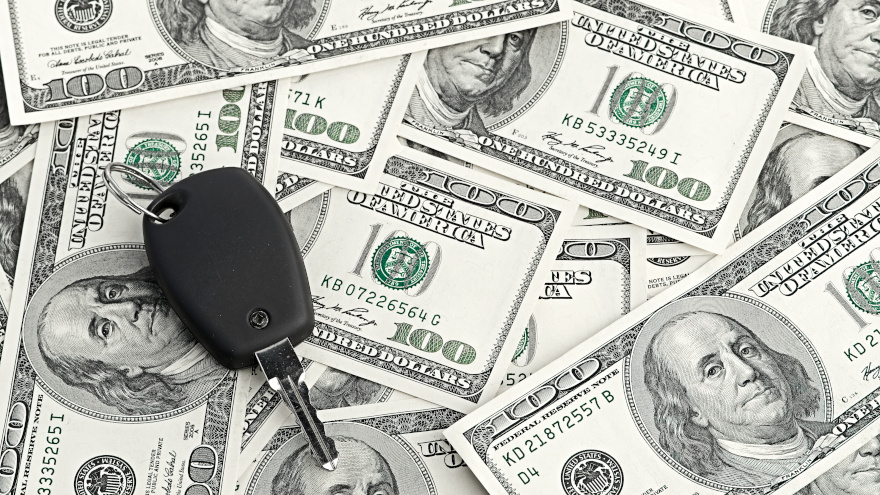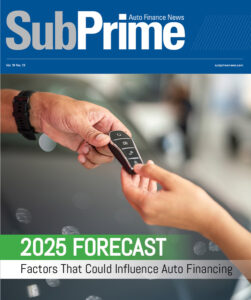4 firms dissect current trends that could impact auto financing

Experts from Cox Automotive, The Conference Board, iLending, S&P Global Ratings recently articulated several ingredients that could create headwinds for the auto finance market during the rest of the year. The ingredients ranged from the bandied about trends connected with employment, inflation and interest rates as well as consumer confidence.
Beginning with S&P Global Ratings, analysts published a report examining performance of U.S. auto asset-backed securities (ABS) sector’s performance. Highlights from the report included:
—Lower retail auto sales and higher funding costs led to a 7.5% decline in auto ABS issuance to $91 billion in 2022. Due to pent-up new-vehicle demand and new issuers, S&P Global Ratings expects 7% growth this year.
—After two years of exceptionally strong credit performance, driven largely by COVID-19-related government assistance and record recovery rates, 2022 was a turning point. Delinquencies rose (with subprime posting record levels by year-end), recoveries declined from peak levels, and losses escalated, with the subprime 2022 vintages reporting higher-than-historical rates.
—While credit performance started to normalize in the prime segment and deteriorated in subprime, rating actions remained largely positive with 419 upgrades and six downgrades.
—Analysts think 2023 will be a challenging year for auto loan ABS performance. Consumer-facing headwinds include potential recession, inflation, decreased savings, and increased debt levels. Higher interest rates and affordability issues are also likely to dampen used vehicle demand and could lead to lower recovery rates.
“Although we expect higher losses this year, we believe the robust structure of these transactions will lead to stable ratings on investment-grade (IG) classes, but the non-IG classes will be more vulnerable to a downgrade,” S&P Global Ratings analysts said in a news release. “We currently have nine subprime non-IG classes issued in 2022 on CreditWatch negative.”
Meanwhile, an industry segment that’s been greatly impacted by rising interest rates is automotive refinancing. Tom Holgate is CEO of iLending, a company that specializes in refinancing,
“We have seen a contraction in lending sources based on the tough economic realities of consumers exhausting their savings, rising credit card and consumer debt balances, and interest rates spiking,” Holgate said in another news release. “It appears we will see a floor to the current lending environment in the first half of 2023 and expect growth beginning in the second half of the year as consumers seek relief from the burden of inflated interest rates that started back in 2022.”
And what’s prompted the Federal Reserve to lift interest rates for more than a year has been inflation. Cox Automotive chief economist Jonathan Smoke recapped the latest inflation readings in his newest blog post.
According to the Consumer Price Index, Smoke indicated year-over-year inflation declined in January “but at a slower pace.” He noted the headline aggregate measure increased by 0.5% on a seasonally adjusted basis. That movement followed an upwardly revised 0.1% increase in December.
“Year-over-year inflation declined in January but at a slower pace,” Smoke said. “Inflation remains elevated and much higher than the Federal Reserve’s target. Inflation impacting lower-income households remains extremely high.”
Smoke also touched on the employment front, obviously a key component to contract holders maintaining their monthly payments.
He mentioned seasonally adjusted initial jobless claims declined by 1,000 to 194,000 for the week ending Feb. 11. Non-seasonally adjusted initial claims fell by 9,000, according to the Cox Automotive expert.
“The holidays create a noisy seasonal data pattern in initial claims, but we should be well past the noise now,” Smoke said. “The labor market is not as strong as it was a year ago, but there is little evidence of major deterioration in the jobless claims data. Moreover, jobless claims remain at historically low levels relative to the job base.”
And finally, The Conference Board Leading Economic Index (LEI) for the U.S. fell by 0.3% in January to 110.3, following a decline of 0.8% in December.
The LEI is now down 3.6% over the six-month period between July and January— a steeper rate of decline than its 2.4 percent contraction over the previous six-month period (January to July 2022).
“The US LEI remained on a downward trajectory, but its rate of decline moderated slightly in January,” said Ataman Ozyildirim, senior director of economics at The Conference Board. “Among the leading indicators, deteriorating manufacturing new orders, consumers’ expectations of business conditions, and credit conditions more than offset strengths in labor markets and stock prices to drive the index lower in the month.
“The contribution of the yield spread component of the LEI also turned negative in the last two months, which is often a signal of recession to come,” Ozyildirim continued in another news release. “While the LEI continues to signal recession in the near term, indicators related to the labor market — including employment and personal income — remain robust so far. Nonetheless, The Conference Board still expects high inflation, rising interest rates, and contracting consumer spending to tip the US economy into recession in 2023.”

 View The Latest Edition
View The Latest Edition

